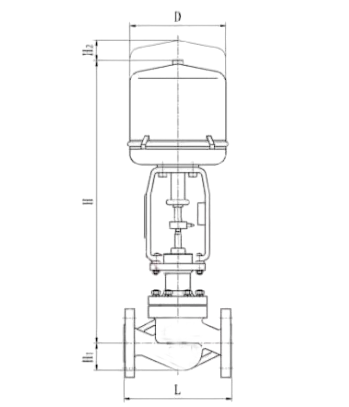Managing Vibration Challenges in Electric Control Valves
On this page
Electric control valves play a crucial role in industrial automation systems. However, the vibration issues that may arise during their operation often pose challenges to system stability and performance. These vibrations in electric control valve manifest primarily as overall body vibrations and stem vibrations, stemming from a variety of complex reasons that require in-depth analysis and meticulous handling to ensure reliable operation and long-term stability of the equipment.
When vibration issues occur with electric control valves, they typically fall into two main types: overall body vibrations and stem vibrations. Overall body vibrations refer to frequent oscillations of the electric control valve on the pipeline or base, while stem vibrations manifest as frequent up-and-down movements of the valve stem. Below, we delve into the root causes of these two types of vibrations and effective methods for addressing them.
Causes and solutions for overall body vibrations in electric control valves can be categorized and addressed as follows.
Pressure Changes due to Flow Variations: Rapid changes in fluid flow velocity can cause abrupt variations in differential pressure across the electric control valve. When these pressure changes exceed the valve's stiffness range, it leads to instability and vibrations in the valve body.
Improper Packing Friction: Inadequate packing or improper gland tightening can allow small external signals to directly impact the valve stem. This results in frequent oscillations of the valve body, often accompanied by rattling noises.
Increase Valve Stiffness: Enhance the valve's ability to withstand pressure fluctuations by increasing its stiffness. This can be achieved by using stiffer springs or reinforcing the valve body structure to better support dynamic pressure changes.
Optimize Packing Tightness: Adjust the amount and tightness of packing material around the valve stem. This ensures proper friction levels: not too loose, which allows excessive movement, nor too tight, which can restrict movement and cause delayed vibrations.
By addressing these causes with appropriate solutions, the overall body vibrations in electric control valves can be effectively minimized, improving system stability and performance.
Stem vibrations in electric control valves can disrupt system performance and reliability, often stemming from dynamic fluid interactions and mechanical factors. Understanding these causes and implementing effective solutions is crucial for maintaining stable operation.
Fluid Dynamics Effects: Stem vibrations can be influenced significantly by dynamic changes in the flow of the measured fluid. This is particularly evident during sudden variations in flow velocity or when internal and external forces are unbalanced, exceeding the valve's stiffness.
Insufficient Damping: Inadequate damping mechanisms within the valve can result in stem vibrations. This occurs when the valve stem lacks sufficient resistance to oscillatory movements caused by fluid dynamics or operational conditions.
Enhance Valve Stability: Improve the overall stability of the valve to minimize the impact of fluid dynamics. This can involve adjusting the valve's internal structure or optimizing operational parameters to better handle fluctuating flow conditions.
Increase Damping Mechanisms: Implement measures to increase damping within the valve system. This can be achieved by selecting packing materials with higher frictional resistance or utilizing specialized stem designs that incorporate effective damping mechanisms like "O"-ring seals.
By addressing these underlying causes and implementing appropriate solutions, stem vibrations in electric control valves can be effectively mitigated. This not only enhances the valve's operational reliability but also contributes to improved system performance and longevity.
In practical operations, vibration issues are often multifaceted and may require consideration of multiple factors. Common treatment strategies include the following.
Selecting appropriate spring stiffness and packing friction to enhance the stability and anti-interference capabilities of electric control valves.
Improving valve body design to reduce internal unbalanced forces affecting the stem, thereby lowering the probability of vibrations.
Regularly maintaining electric control valves, inspecting and adjusting critical components such as packing and springs, ensures their proper operation and optimal performance.
In summary, effectively managing vibration in electric control valves demands technical expertise, operational precision, and dynamic system understanding. Adjusting valve structures, optimizing parameters, and enhancing damping/stiffness can mitigate vibrations, ensuring system stability and performance. These efforts not only boost equipment reliability but also cut maintenance costs and elevate production efficiency in industrial automation, driving sustained business growth.

